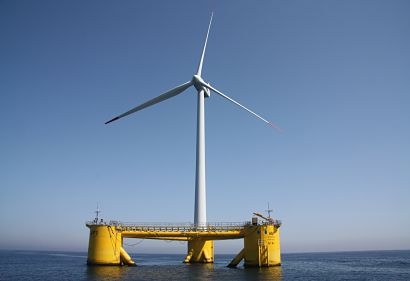
DNV expects that offshore wind’s contribution to the wider energy mix will increase to about 40 percent of total wind production by mid-century, with floating offshore wind contributing 264 GW to the total 1,748 GW installed offshore wind capacity by 2050. The growing momentum for floating offshore wind will result in cost reduction, scaling of production, and broaden applicability; significant technological development is expected to solidify its growth in the next five years.
Floating wind is driving a structural shift in that they offer access to at least four times as much surface over deep water as bottom-fixed ones, which increases flexibility in site selection. This allows developers to target areas with higher wind speed, and lower social and environmental impact. Moreover, wind is a local and renewable source, which not only plays a role in the transition to decarbonised energy systems, but also reinforces energy security by curtailing dependence on imports.
Europe is currently leading the shift to wind power thanks to ambitious net-zero targets, substantial investments in innovative technologies and support for projects such as Hywind Tampen, the world’s largest floating offshore wind farm, currently under construction.
Success stories like the Kingcardine, Hywind and WindFloat Atlantic projects in Scotland and Portugal have proven that floating farms can perform as well as (or better than) bottom-fixed ones. This has driven investments in site development and grid connection in order to generate economies of scale – providing a further push to renewable energy programmes in an electricity market that has demonstrated a low resilience to international crises.
Relying on strong grids, robust local supply chains, knowledge transfer from their well-established naval industries and favourable conditions off their coasts, Southern European countries are embracing wind power more and more: in 2022 alone, France has already launched a 500 MW auction round in the Mediterranean (consistent with its offshore wind capacity target of 7.4 GW by 2030), while Portugal has announced a potential 3 to 5 GW auction for this year.
Spain – whose industry plays a critical role in the development of floating offshore wind technology, ranking second worldwide in terms of active designs – is also expected to release its first auction before the end of the year, in line with a roadmap that sets a 1 to 3 GW target for floating-wind-generated power connected to the grid before the end of the decade.
“DNV’s latest Industry Insights research shows that 51 percent of the energy sector’s senior executives in France, Portugal and Spain expect to increase focus and investment in floating wind in the year ahead, which shows how great the impetus is on the industry side in these countries” said Ditlev Engel, CEO, Energy Systems at DNV. “While this is a positive sign, we need to move faster to meet the carbon emission reduction goals we committed to, ensure energy security and move prices downwards. This can only happen with strengthened public support and the removal of the remaining barriers in these countries’ regulatory frameworks, continues Engel. We welcome the emergence of great enterprises like Windfloat Atlantic, EolMed or the floating projects off the coasts of the Canary Islands and Cantabria, but countries like France, Portugal and Spain still need more ambitious and proactive policies if they are to maintain their advance in the field. They are still forerunners at this time, but it is worth noting that projects that were introduced later in South Korea, for instance, will be in operation sooner, thanks to fewer regulatory roadblocks and speedier procedures.”
For additional information:

